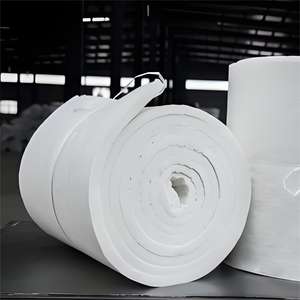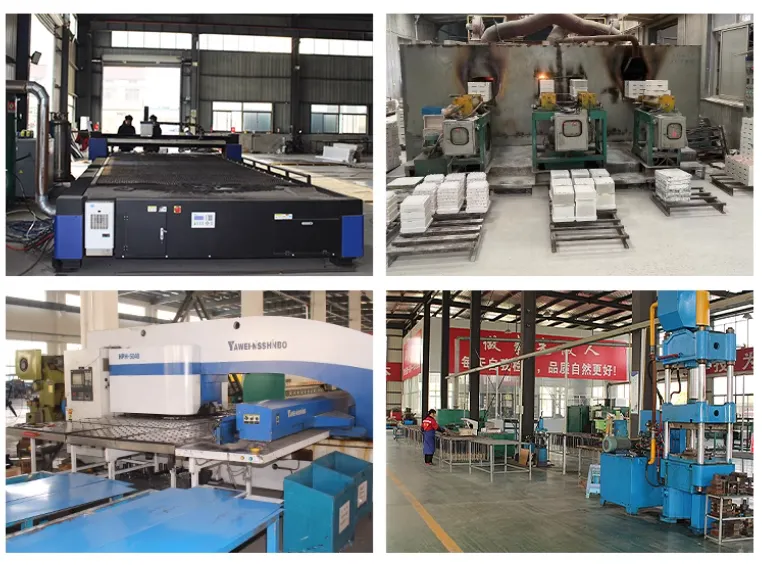Discover Premium Ceramic Products | Durability & Elegance United | Advanced Ceramics
1. Introduction
Just 24 hours ago, Wolfspeed announced a $5 billion expansion of its silicon carbide (SiC) wafer manufacturing facility in North Carolina—a move that underscores the surging global demand for high-performance semiconductors used in electric vehicles, 5G infrastructure, and renewable energy systems. At the heart of this technological leap lies a surprisingly unsung hero: the silicon carbide crucible.

While most people associate silicon carbide with abrasives or armor, its role in high-temperature crystal growth is where it truly shines. In this article, we’ll dive into how the silicon carbide crucible enables the production of ultra-pure SiC crystals—and why alternatives like silicon nitride or boron carbide simply can’t match its performance in this niche but vital application.
2. Why Silicon Carbide Crucibles Are Essential for Crystal Growth
Growing single-crystal silicon carbide—a process known as physical vapor transport (PVT)—requires temperatures exceeding 2,200°C in an inert atmosphere. At these extremes, most materials either melt, react with the vapor, or contaminate the crystal. Enter the silicon carbide crucible.
Made from high-purity silicon carbide, these crucibles offer exceptional thermal stability, chemical inertness, and mechanical strength at ultra-high temperatures. Unlike graphite crucibles, which can introduce carbon impurities, silicon carbide crucibles minimize contamination, ensuring the resulting SiC wafers meet the stringent purity standards demanded by the semiconductor industry.
3. Silicon Carbide vs. Alternatives: Why Purity and Stability Matter
Engineers sometimes consider other advanced ceramics like silicon nitride or boron carbide for high-temp applications. However, boron carbide vs silicon carbide reveals a clear winner for crystal growth: boron carbide tends to release boron vapor at high temperatures, which can dope the SiC crystal unintentionally and ruin its electrical properties.

Silicon nitride, while excellent for components like silicon nitride rings, custom silicon nitride heat shields, or silicon nitride plates, lacks the thermal conductivity and chemical compatibility needed inside a PVT furnace. Even a silicon nitride crucible factory would struggle to produce a vessel that survives repeated 2,300°C cycles without degrading.
In contrast, the silicon carbide crucible remains dimensionally stable and non-reactive—critical for consistent, high-yield crystal production.
4. Beyond the Crucible: Supporting Components in High-Temp SiC Systems
The silicon carbide crucible doesn’t work alone. It’s part of an integrated high-temperature ecosystem that includes other specialized SiC components:
- silicon carbide ceramic tubes for furnace insulation and gas flow
- silicon carbide thermocouple protection tubes to monitor temperature without interference
- silicon carbide ring and silicon carbide ceramic columns for structural support
- silicon carbide burner nozzles and silicon carbide brick for furnace lining
Even rbsic silicon carbide tile blocks—reaction-bonded SiC—are used in furnace walls for their thermal shock resistance. Together, these parts create a contamination-free, thermally efficient environment where flawless SiC crystals can form.

5. The Consumer Confusion: Not All ‘Silicon Carbide Ceramic’ Is for Semiconductors
A quick online search reveals dozens of products labeled ‘silicon carbide ceramic baking dish,’ ‘silicon carbide dinner ceramic plates,’ or ‘silicon carbide ceramic serving bowls.’ While these items may use SiC for thermal retention or aesthetic appeal, they are fundamentally different from industrial-grade silicon carbide crucibles.
True high-purity silicon carbide used in semiconductor manufacturing contains minimal impurities (often <10 ppm of metals) and is sintered under controlled conditions. Kitchenware labeled as 'silicon carbide ceramic' is typically a composite or glaze-enhanced stoneware—not suitable for 2,000°C environments.
Similarly, items like silicon carbide ceramic disc taps, silicon carbide grinding discs, or silicon carbide ceramic pipes serve entirely different markets—plumbing, abrasives, or chemical processing—and shouldn’t be conflated with crucible-grade material.
6. Future Outlook and Industry Momentum
With companies like Wolfspeed, II-VI (now Coherent), and STMicroelectronics racing to scale SiC wafer production, demand for high-performance silicon carbide crucibles is skyrocketing. Innovations in crucible design—such as porous variants for better vapor control or composite liners to extend lifespan—are already in development.
Meanwhile, the high purity silicon nitride powder market continues to grow, but primarily for bearings, cutting tools, and aerospace—not crystal growth. For now, and the foreseeable future, the silicon carbide crucible remains irreplaceable in the quest for better, faster, and more efficient power electronics.
7. Conclusion
From electric cars to solar inverters, the tech revolution runs on silicon carbide semiconductors—and those start life inside a silicon carbide crucible. This niche ceramic component may not make headlines, but without it, the next generation of clean energy and digital infrastructure simply wouldn’t exist. As manufacturing scales globally, expect even more innovation in how we design, produce, and reuse these remarkable high-temperature vessels.
Our Website founded on October 17, 2012, is a high-tech enterprise committed to the research and development, production, processing, sales and technical services of ceramic relative materials such as Silicon. Our products includes but not limited to Boron Carbide Ceramic Products, Boron Nitride Ceramic Products, Silicon Carbide Ceramic Products, Silicon Nitride Ceramic Products, Zirconium Dioxide Ceramic Products, etc. If you are interested, please feel free to contact us.
